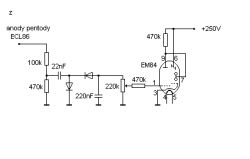Hello
I also have a voltage multiplier for this amplifier just in case - the tested one works identically to the PCL86 tube after adding the multiplier.
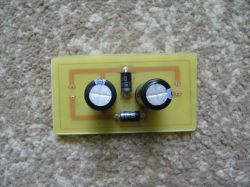
I also have a separate rectifier on the bridge instead of selenium as a separate power supply board for the Bambino transformer
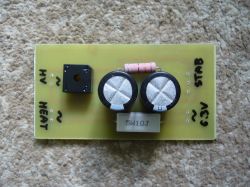
I used a used ECL86 lamp from the Bambino wreck, but I will not buy a new one, the price in the store is PLN 170 so I will not change to PCL86 I already have a power supply board with a voltage doubler so as not to change the transformer specifically for PCL86

Currently my amplifier is mounted on a board and it sounds nice all the time waiting for the housing.
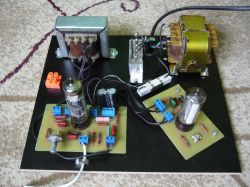
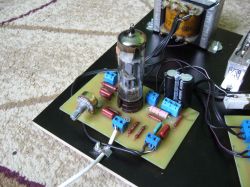
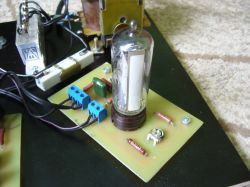
Now work is underway to replace the EM84 lamp with the EM80 - the new control indicator board - like this
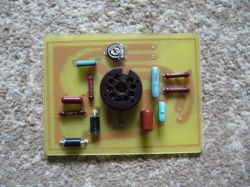
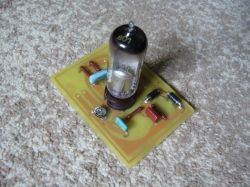

In the future, I will make a second channel on the board with the second control indicator and compare - the board with the indicator lamp can be replaced if necessary, so that finally there are two lamps of the same or if I like one EM84 and the other EM80.
The design of this amplifier has recently been abandoned a bit due to the ECC83 and 2xEL84 amps - also already done on the countertop - I have to admit that the sound from the EL84 is better - maybe it is a matter of the elements surrounding the tubes, but there is a difference - I will add that all tubes I use are used tubes . This is what the current 2xEL84 amplifier looks like - interestingly, I used a luck for this amplifier from Bambino, with the right connection, these loudspeakers work and the mains one is from Bambino 3 is 40W but if I find that it gives little power, I will attach some of the incandescence to the second such transformer on the board place.


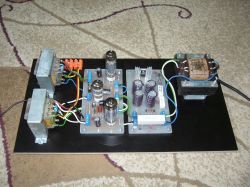

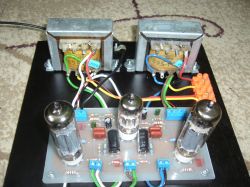
So I managed to make a tube amplifier for pennies - I only bought stands and used EL84 tubes - I had ECC83 from a reel ZK120 or 140, I do not remember anymore - I got from Bambino adapters - PCB was made by my own hands - the rest of the elements could be found, so the whole thing could be around PLN 100 and the sound is beautiful.
Best regards ...
















